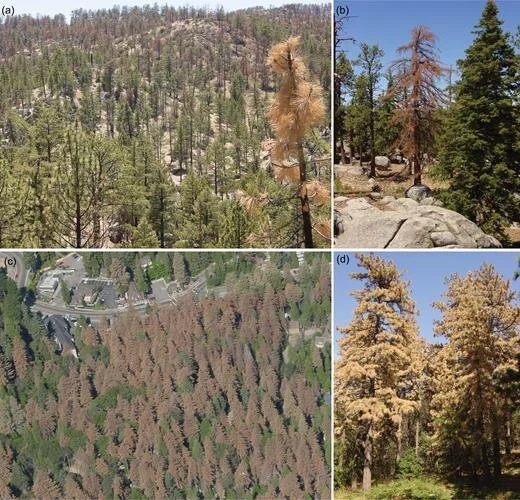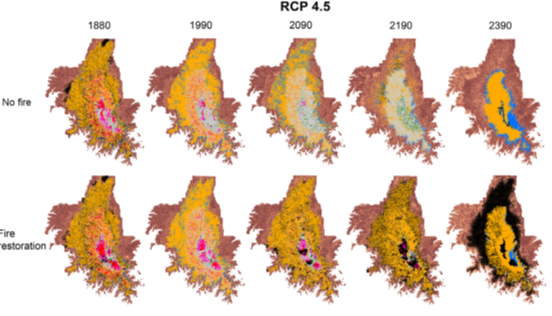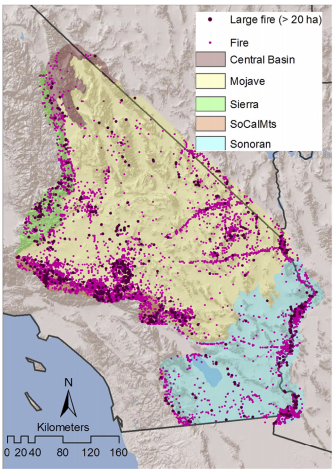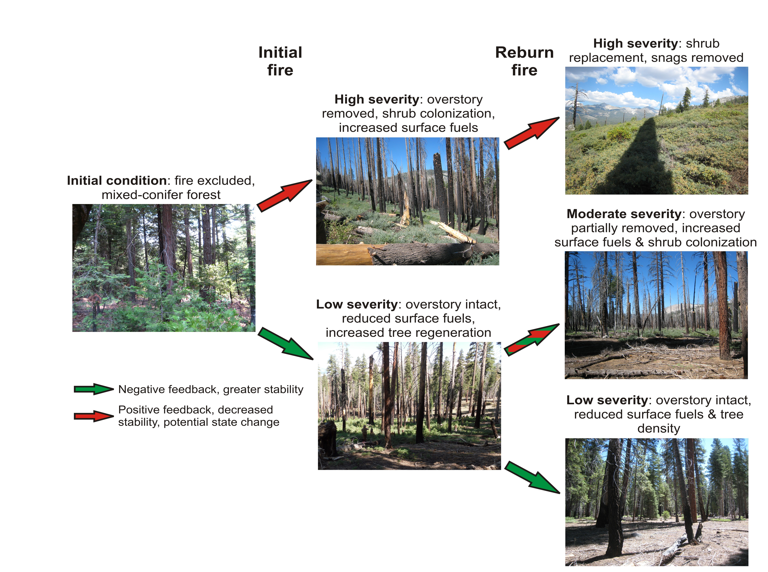Using historical aerial imagery to assess non-conifer vegetation type change under fire exclusion
/Although vegetation types other than conifer forests make up the majority of burned area in California wildfires, relatively few studies quantify the drivers and patterns of vegetation change in these ecosystems. The impacts of fire exclusion on non-conifer systems remain poorly understood, and the relative influence of fuels compared to factors like climate change or type conversion on fire behavior is largely unknown. To address this knowledge gap, the authors investigated large-scale vegetation change as a possible driver of current trends in fire behavior within mixed-hardwood and shrub-dominated ecosystems in central and coastal Northern California.
Read More

















